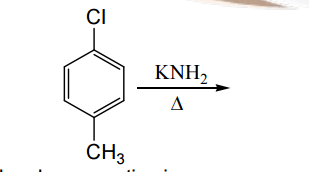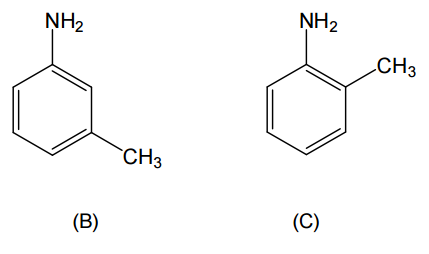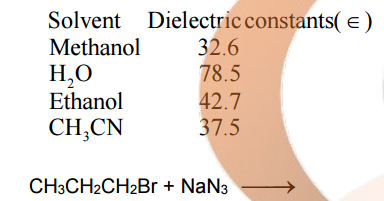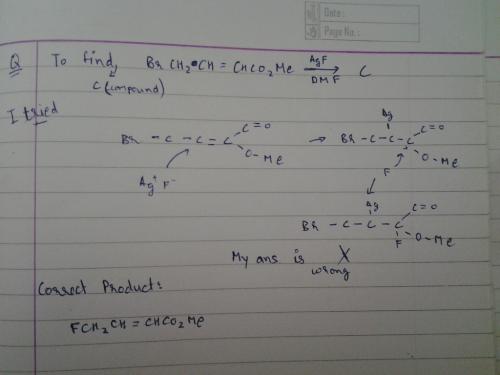

koolman
Senior Members-
Posts
32 -
Joined
-
Last visited
Content Type
Profiles
Forums
Events
Everything posted by koolman
-
why the compund following give(s) white precipitate with aqueous AgNO3? can any tell me the mechanism , please..
-
Under conditions of photochemical chlorination, (CH3)3CCH2C(CH3)3 gives a mixture of two monochlorides what is the meachanism
-
in the following reaction we have to find the major product . according to me it will be C compound beacuse of anion (intermediate) stability.
-
AMONG THE compounds which of the following reacts faster in an SN1 reaction? I. cis-4-tert-butylcyclohexyl bromide II. trans-4-tert-butylcyclohexyl bromide I think II compound beacuse of stable carbocation.
-
In an experiment, Hughes studied the rate of racemisation of 2-iodooctane by sodium iodide (with radioactive iodine) in acetone and compared it with the rate of incorporation of radioactive iodine into 2-iodooctane. How will the rate of racemisation compare with the rate of incorporation if (I) Each act of exchange proceeds with retention of configuration (II) Each act of exchange proceeds with inversion of configuration II) Each act of exchange proceeds randomly in which retention and inversion are equally likely
-
-
how can we see the order of decreasing reactivity for the following X substituents in SN2 reaction I X = OH- II X = CH3CO2- III X = CF3SO3- IV X = CCl3CO2-
-
the reagent that will yield the greater amount of substitution on reaction with 1-bromobutane would be CH3CH2OK in dimethyl sulfoxide (DMSO) OR (CH3)3COK in dimethyl sulfoxide (DMSO). how can we decide it .
-
We have to find the compound C . Why the product I formed is wrong and how is the correct product is formed .
-
But there is gravity
-
No the question is complete
-
I think I have done correct
-
I have equate the volume
-
If we have a closed box filled with liquid . It is given a horizontal acceleration g/2 and a vertical acceleration g/2 . Then I tried to find the angle of the free surface with the horizontal . It should be tan^(-1) 1/2 as slope is equal to tan^(-1)a(x)/g . But here there is vertical acceleration does it affect the slope . Any help is appreciated
-
Thank you for helping
-
If 1 thousand small drops of WA ter each of radius combined to form one single large drop then what should be the energy . If the surface tension is equal to 0.07 N/m . I think the surface area should decrease as energy is released , but how will we find the energy. Or how can we find radius of large drop to find , A= surface area
-
Ok i got thank you very much
-
The diagram is on http://s15.postimg.org/ogeqzd76j/Screenshot_2015_12_16_22_16_35.jpg
-
If we have a cylindrical tank of area A which has a small outlet of area a at the bottom of the surface . And the container starts filling with a constant rate k m^3/sec . Now the max. level of water will be h = k^2/(2a^2g) as by using bernoulli's equation . But how will find the time after which level of water become h .
-
Ignore surface tension
-
Sory very much
-
If we have liquid filled in a L shaped tube of length x and height h . Then what should be the acceleration so that liquid starts falling out . According to me if we start accelerating it with any value , it will start falling but I have a doubt in it
-
Then why will it rotate it would collapse
-
Which force balances centripetal force . For example if we are rotating a ball tied with a string then centripetal force is acting inwards . Then which force balances it . And the centrifugal force is pseudo force.





